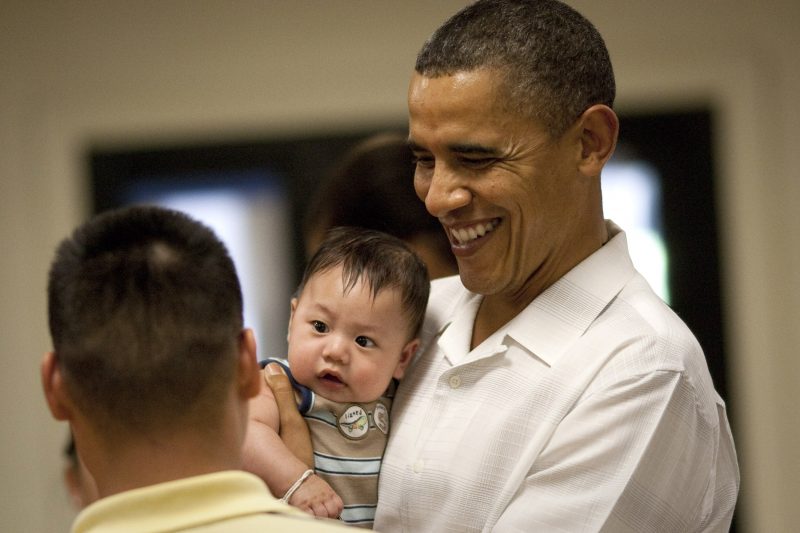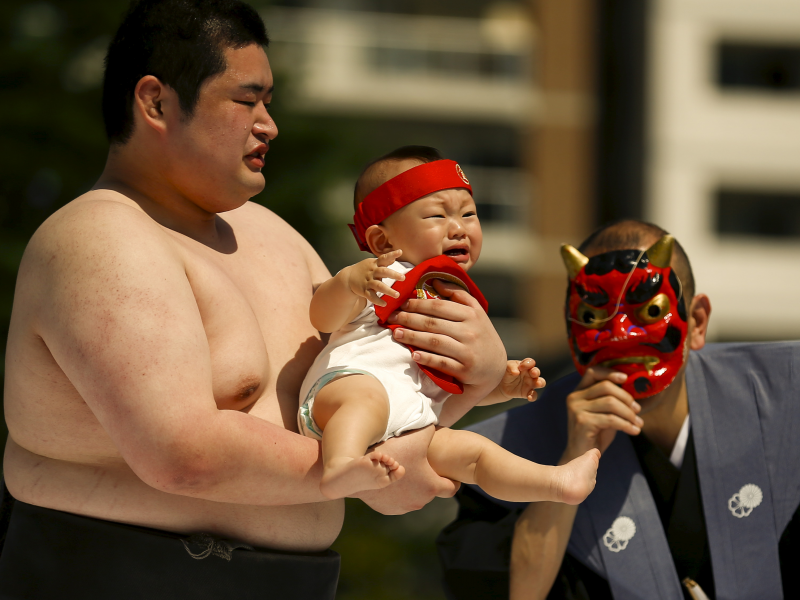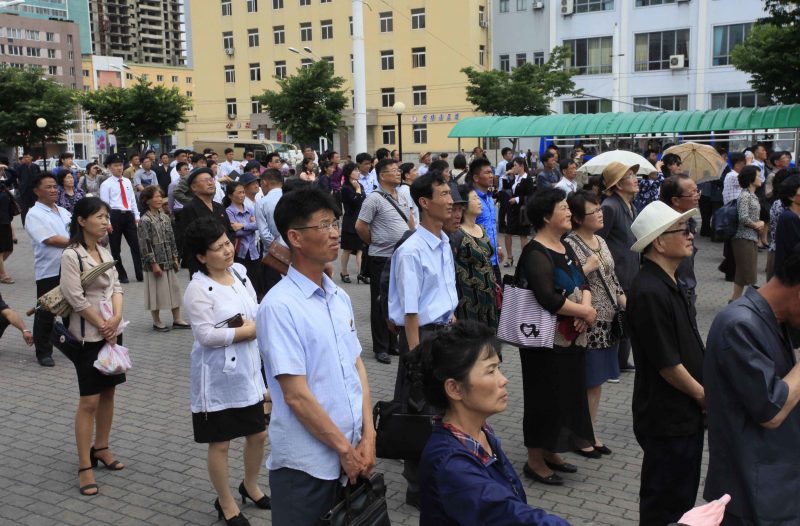All around the world, countries are seeing dwindling birth rates and rising life expectancy. Aging populations are leading to greater spending on healthcare and pensions, but the number of people working and paying taxes is steadily going down. As a result, these countries are at risk of becoming “demographic time bombs,” signifying a crisis of too few working people.
Demographers say countries need fertility rates of 2.2 children per woman to maintain a stable population, but many nations’ birth rates, such as those of South Korea and the United States, have fallen below 2.
An increase in immigrant workers can help alleviate these trends, but immigration alone can’t reverse a demographic time bomb if a significant number of citizens leave for employment in other countries.
Some places, such as the town of La Estrella in Spain, already reveal what a demographic time bomb can look like – a decreasing population, a large number of elderly people, and few children.
Here are some of the countries most at risk of becoming demographic time bombs:
In the United States, the fertility rate has reached a record low of 1.76.

The fertility rate in the United States fell to an all-time low last year. Americans' average life expectancy, meanwhile, sits at a relatively high 78.7 years.
Many experts say the 2008 economic recession and high college tuition are contributing to this trend.
According to a 2018 survey in The New York Times, however, adults who want kids say they sometimes end up having few, or zero, kids due to the high cost of childcare. The average cost of full-time childcare exceeds $10,000 a year in several states, according to Child Care Aware of America.
The US birth rate has remained below "replacement level" since the 1970s, which means not enough children are being born to keep the population at a steady level.
Last year, the US Census Bureauwrote in a paperthat women who have kids between the ages of 25 and 35 have more difficulty in getting fair pay than women who give birth outside of that range. American women are now having children older than ever.
The ratio of retired citizens to working Americans keeps increasing, though the number of immigrant workers is going up as well.
Spain has more deaths than births each year, and some towns are already nearly abandoned.

The number of deaths in Spain has outpaced the number of births for years.
Spanish women tend to give birth later in life than most other European women, and Spaniards also live longer than anyone else in the European Union. On average, women in Spain have 1.5 children.
Although Spain's population increased in 2017 for the second straight year, the change was partly due to a rise in migrant arrivals, according to Reuters .
In Spain's northeastern Aragon region, one village already shows what a demographic time bomb can look like. The only remaining residents of La Estrella are two people in their 80s.
Last year, the Spanish government hired a special commissioner to determine how to reverse falling birth rates.
A rise in immigration to Italy has not helped the country steer clear of becoming a demographic time bomb.

A record-low 464,000 children were born in Italy last year, and the country's mean age has surpassed 45 for the first time ever.
The number of immigrants to Italy rose last year and the number of Italians leaving the country decreased, but neither trend is reversing Italy's path toward a demographic time bomb, according to The Local.
Many Italians want to have two or more children, The Local reported, but cite difficulties in finding employment as a factor in their decisions not to.
Bulgaria's population is shrinking faster than any other nation in the world.

The population of Bulgaria, the European Union's poorest member, may soon become as low as it was in the aftermath of World War II, Bloomberg reported.
Bulgaria's population is shrinking faster than any other country in the world; it is expected to hit only 5.4 million in 2050, down from 7 million last year, according to Quartz.
In addition, the country has seen an increase in emigration as citizens seek job opportunities elsewhere. Bulgaria's fertility rate is only 1.46 children per woman.
"The decline in the active population is a social and economic bomb that will explode unless we take adequate measures," Bulgaria's deputy labor minister, Sultanka Petrova, told Bloomberg last year.
Latvia's population is steadily dropping, and many citizens are leaving the country to look for jobs in other parts of the European Union.

Since Latvia joined the European Union in 2004, nearly 20% of the country's population has left to seek employment in others parts of the bloc, such as Germany and the United Kingdom.
Latvia's population, reported to be nearly 2 million last year, is estimated to fall to 1.52 million by 2050, according to Quartz. The nation is one of 10 with the fastest shrinking populations in the world.
All 10 countries are located in eastern Europe. In addition to Latvia and Bulgaria, the populations of Ukraine, Croatia, Romania, Moldova, Lithuania, Poland, Serbia, and Hungary are all estimated to drop by 15% by 2050.
Some South Koreans cite a lack of financial stability as one of the main reasons they are not having children.

The South Korean government has offered cash incentives to people who have more than one child, as the fertility rate currently sits at 1.26 children per woman - too low to maintain a stable population.
Amid the declining fertility rates, some South Koreans have said they are not having children due to a lack of financial stability, according to Quartz.
Both the government and some private companies are providing incentives for fathers to take parental leave in an effort to reverse the effects of the potential demographic time bomb.
According to Quartz, demographers say South Korea's low fertility rate is linked to women having children at an increasingly later age. In 2017, the average age of a Korean woman having a first child surpassed 31. It was the oldest average in the world.
The Japanese government is offering cash incentives in an effort to encourage women to have children.

Researchers are worried about a demographic time bomb in Japan, where the lowest-ever number of births was recorded last year.
Prime Minister Shinzo Abe's government has taken steps to encourage Japanese women to have children. According to CNN, officials have offered cash payments and other incentives. The country's fertility rate has risen slightly, most recently reaching 1.44, which is comparable to the 1990s.
Unlike other countries with similarly low fertility rates, Japan has not seen a significant influx of immigrants. A low number of workers in the country decreases the amount of tax money going toward retirement and healthcare services for older residents, who are growing in numbers.
Some parts of Japan are already showing signs of a demographic time bomb, with a dwindling population and a large number of elderly residents.
Immigration can help reverse a demographic time bomb, but the United Kingdom's exit from the European Union has led to a fall in migration.

The United Kingdom's birth rate has fallen to its lowest level in a dozen years, The Times reported.
At the same time, the number of British residents age 65 or older is rising due to better healthcare and higher living standards. The UK's referendum to leave the European Union has led to a decrease in the number of immigrants, who are generally younger, leading to an increasingly older population.
According to The Guardian, the number of elderly people without social care has peaked, with one in seven lacking adequate support. About 1.4 million residents who are older than 65 are not receiving help with getting up or getting washed.
Singapore has the lowest fertility rate in the world, but economists say the effects of a demographic time bomb can still be reversed.

Singapore's fertility rate, 0.83, is the lowest in the world.
A 2017 report by the Singapore-based United Overseas Bank suggests that the country is on a similar path as Japan. In 2017, for the first time in modern Singapore's history, the percentage of people who were 65 years old or older was equal to the share of residents younger than 15.
Although Singapore's workforce is aging and the proportion of youth is declining, the report suggests that Singapore's economic decline may still be reversed. The report recommends that Singapore's government recruit more immigrant workers - something Japan has not focused on.
Two years ago, China began allowing families to have two children instead of one, but the policy change has not done enough to reverse a decreasing fertility rate.

China's fertility rate keeps dropping despite the government's 2016 decision to allow families to have two children instead of one (a policy that had been in place since 1979), so local authorities are taking steps to encourage more childbirth.
Some provinces want to pay cash bonuses to parents who have a second child, and others have suggested eliminating limits on childbirth altogether. The National Health Commission, meanwhile, has reportedly asked researchers to study whether tax breaks could help spark a baby boom.
And the northern Shanxi province announced China's first marriage subsidy earlier this year, offering to help couples with the cost of wedding photographs, honeymoon travel, and more.
About 25% of China's population is expected to be 60 years or older by 2030, a significant increase compared to the roughly 13% of residents who were part of that age bracket in 2010.











